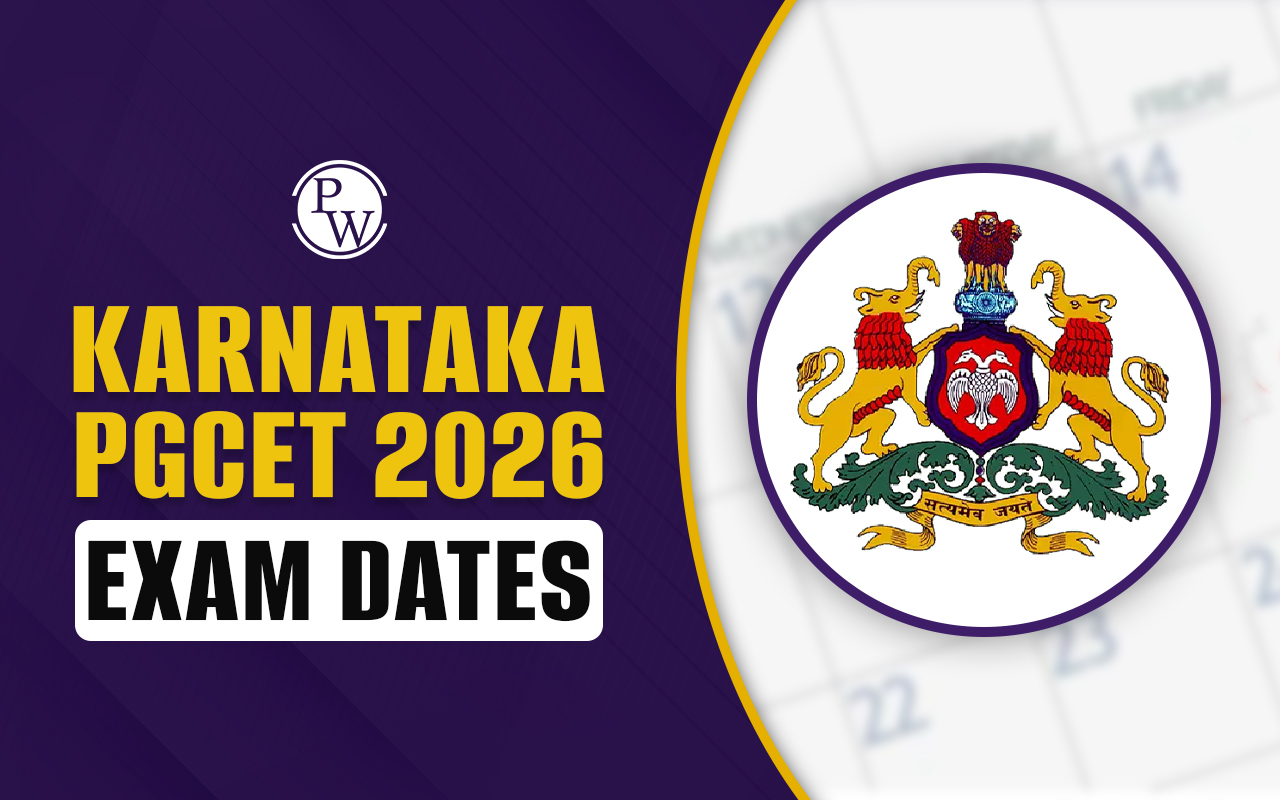
CAT Syllabus 2026 is the foundation for aspirants who are aiming to secure admission into the prestigious Indian Institutes of Management (IIMs) and other top-tier business schools in India. The Common Admission Test (CAT) is conducted annually to evaluate a candidate's aptitude in verbal ability, data interpretation, and mathematical reasoning. Having familiarity with the latest CAT 2026 syllabus and exam pattern is important. This all helps to create a structured preparation strategy that balances speed and accuracy.
CAT Syllabus 2026 Overview
The CAT 2026 exam is expected to follow the consistent pattern of recent years, which features a three-section structure with a strict sectional time limit. There is no CAT 2026 syllabus official release by the IIMs. Based on past trends, the following highlights define the CAT 2026 exam syllabus basic overview:
|
CAT Syllabus 2026 Overview |
|
|
Details |
Syllabus Information |
|
Exam Name |
Common Admission Test (CAT 2026) |
|
Key Subjects |
VARC (Language), DILR (Logic), QA (Mathematics) |
|
Core Knowledge Areas |
Reading Comp, Data Logic, Arithmetic, Algebra, Geometry |
|
Syllabus Standard |
High School Level (Class 8-10) with Advanced Application |
|
Sectional Time |
40 Minutes per Section (Strictly Timed) |
|
Question Types |
MCQs (Multiple Choice) & TITA (Type In The Answer) |
|
Marking Logic |
+3 for Correct; -1 for Incorrect (MCQs); 0 for TITA Errors |
|
Official Status |
No Official Topic List (IIMs define only the Sections) |
CAT Syllabus PDF Download Section Wise Topics
The official body conducting the CAT exam does not release a detailed syllabus PDF. Instead, they outline the primary sections of the exam: Verbal Ability & Reading Comprehension (VARC), Data Interpretation & Logical Reasoning (DILR), and Quantitative Aptitude (QA).
To understand the complete list of topics and subtopics, candidates often refer to past years’ question papers and expert-curated resources. For a detailed syllabus overview, you can download the CAT Syllabus PDF below. This PDF will help you track covered and uncovered topics easily.
Section Wise CAT Exam Syllabus 2026
The CAT syllabus 2026 section wise is designed to test diverse mental faculties ranging from linguistic skills to logical consistency and numerical proficiency.
Verbal Ability & Reading Comprehension (VARC)
The CAT syllabus 2026 VARC section is the first part of the paper. It primarily focuses on comprehension skills and the logical arrangement of ideas.
|
Verbal Ability & Reading Comprehension (VARC) |
|
|
Section |
Topics (Indicative) |
|
Reading Comprehension (RC) |
4 Passages (around 500-600 words each) covering Science, Business, Philosophy, Literature, and Social Issues. |
|
Verbal Ability (VA) |
Para-jumbles (TITA), Para-summary, Odd Sentence Out, and Para-completion. |
Data Interpretation & Logical Reasoning (DILR)
This is often considered the most unpredictable section, testing the candidate's ability to analyze complex data sets and solve intricate puzzles.
|
Data Interpretation & Logical Reasoning (DILR) |
|
|
Section |
Topics (Indicative) |
|
Data Interpretation (DI) |
Bar Graphs, Pie Charts, Line Graphs, Tables, Caselets, and Combined Charts. |
|
Logical Reasoning (LR) |
Seating Arrangements, Venn Diagrams, Syllogisms, Blood Relations, Games & Tournaments, and Binary Logic. |
Quantitative Aptitude (QA)
The CAT syllabus 2026 quantitative aptitude is dominated by high-school level mathematics, with a heavy emphasis on Arithmetic and Algebra.
|
Quantitative Aptitude (QA) |
|
|
Section |
Topics (Indicative) |
|
Arithmetic |
Percentages, Profit & Loss, Simple/Compound Interest, Averages, Ratio & Proportion, Time-Speed-Distance, and Time & Work. |
|
Algebra |
Linear/Quadratic Equations, Inequalities, Logarithms, Functions, Sequences, and Series. |
|
Geometry & Mensuration |
Triangles, Circles, Polygons, Coordinate Geometry, and 3D Mensuration. |
|
Number System |
HCF & LCM, Divisibility Rules, Remainders, Factors, and Base Systems. |
|
Modern Math |
Permutations & Combinations, Probability, Set Theory, and Binomial Theorem. |
CAT 2026 Exam Pattern and Marking Scheme
Understanding the CAT 2026 syllabus and exam pattern is important for time management, as candidates cannot switch between sections once a 40-minute block begins. Here are the expected exam pattern details for CAT 2026:
|
CAT 2026 Exam Pattern Details (Expected) |
|||||
|
Course Section |
No. of Questions |
MCQs |
TITA Questions |
Marks |
Duration |
|
VARC |
24 |
21-22 |
2-3 |
72 |
40 Mins |
|
DILR |
22 |
14-16 |
6-8 |
66 |
40 Mins |
|
QA |
22 |
14-15 |
7-8 |
66 |
40 Mins |
|
Total |
68 |
49-53 |
15-19 |
204 |
120 Mins |
CAT 2026 Marking Scheme Rules
The CAT marking scheme rewards accuracy and penalizes incorrect guesses in specific question types. Use the following breakdown for a clear understanding:
-
Correct Response (MCQ/TITA): +3 Marks
-
Incorrect MCQ: -1 Mark (Negative Marking)
-
Incorrect TITA: 0 Marks (No penalty for wrong answers)
-
Unattempted Question: 0 Marks
CAT 2026 Preparation Strategy
To master the CAT syllabus for MBA 2026, aspirants should adopt a structured and data-driven approach. Here are some important points which needs to be considered by candidates while preparing for CAT 2026:
-
Strengthen Fundamentals: Start with NCERT Mathematics (Class 8-10) for QA and build a habit of reading diverse genres (Aeon, The Guardian) for VARC.
-
Focus on High-Weightage Topics: Arithmetic and Algebra account for nearly 70% of the QA section. Similarly, Reading Comprehension forms 67% of the VARC section.
-
Master TITA Questions: Since there is no negative marking for TITA questions, practice typing in accurate answers without the help of options.
-
Simulate Exam Conditions: Take full-length CAT mock tests regularly to build stamina for the 2-hour duration and improve sectional time management.
-
Analyze Previous Year Papers: Solving CAT previous year questions helps identify recurring themes and the actual difficulty level of the exam.
Most Recommended Books For CAT Preparation 2026
Here are the best CAT Preparation Books for all three sections covered in CAT Syllabus 2026:
For Data Interpretation and Logical Reasoning (DILR):
-
CAT Data Interpretation & Logical Reasoning by Gautam Puri
-
Logical Reasoning and Data Interpretation for CAT by Nishit K Sinha
-
Data Interpretation & Data Sufficiency by Ananta Ashisha
-
How to Get Prepared for Data Interpretation for CAT by Arun Sharma
For Verbal Ability and Reading Comprehension (VARC):
-
How to Get Ready for CAT's Reading Comprehension and Verbal Ability Tests by Arun Sharma and Meenakshi Upadhyay (Arihant)
-
30 Days to a Stronger Vocabulary by Wilfred Funk & Norman Lewis (Simon & Schuster)
-
How to Prepare for CAT's Verbal Ability and Reading Comprehension Questions by Sharma and Upadhyay
-
High School English Grammar & Composition by Wren & Martin
For Quantitative Aptitude (QA)
-
NCERT Mathematics Books of both 9th and 10th class (NCERT)
-
How to Study for the Quantitative Aptitude Section of CAT by Arun Sharma
-
Quantitative Aptitude Quantum CAT by Sarvesh Sharma
-
Quantitative Aptitude for Competitive Examinations by Abhijit Guha
-
Quantitative Aptitude for CAT by Nishit Sinha CAT Syllabus
Achieve your target of pursuing an MBA degree from a renowned institute with strategic exam preparation offered by PW MBA Online Coaching. Enroll now to access regular live classes, doubt clarification sessions, regular evaluations, and performance analysis to strengthen weak areas and crack various entrance exams.





